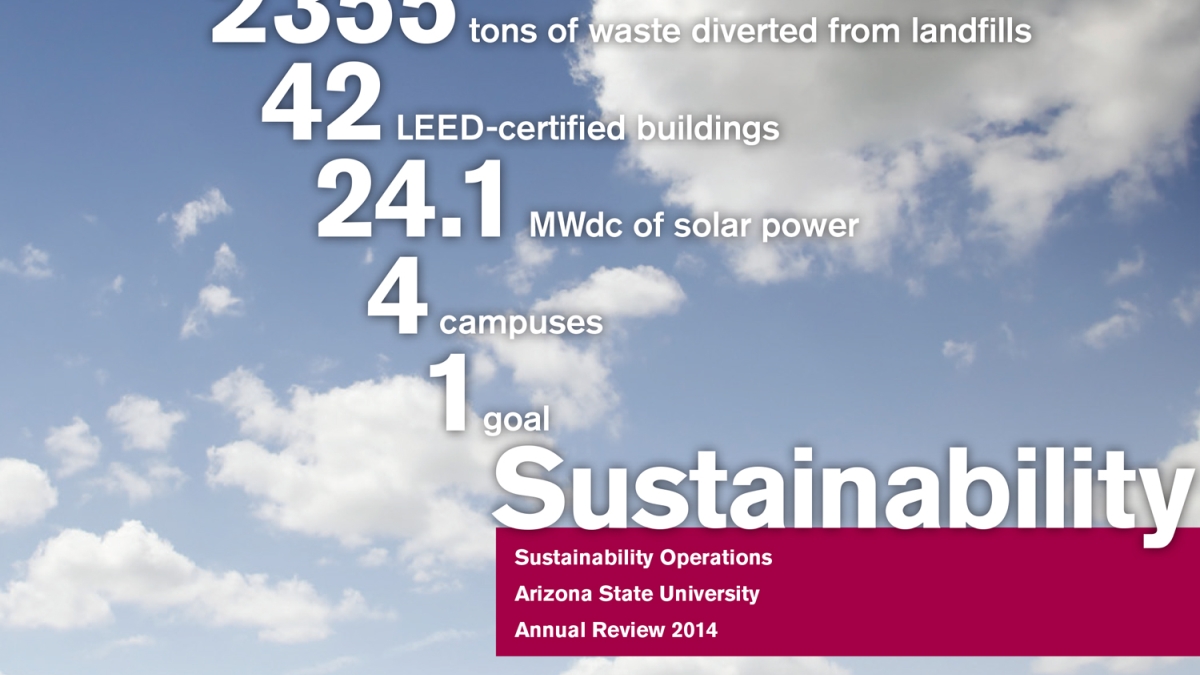ASU shares operational sustainability progress in 2014 annual review

Every year, Arizona State University strives to minimize consumption, maximize efficiency and reassess the traditional way of functioning to be more sustainable. ASU's newly released 2014 Sustainability Operations Annual Review shows that the university has made major strides in that goal.
Between 2007 and 2014, ASU has reduced its greenhouse gas emissions despite increases in students and space:
• increased gross square feet 24.3 percent to 20,789,806
• reduced greenhouse gas emissions 18.5 percent to 302,790 metric tons
• increased total student enrollment 29.4 percent to 83,301 (ASU unduplicated total)
• reduced per-square-foot greenhouse gas emissions by 34.4 percent.
“When you consider how much growth the university has achieved over the past seven years, it’s remarkable that we have reduced our greenhouse gas emissions,” said John F. Riley, associate vice president of University Business Services and the university sustainability operations officer.
The 2014 Sustainability Operations Annual Review includes major highlights about the university’s progress in operational sustainability and significant facts that support each of ASU’s overarching sustainability goals, which are climate neutrality; zero waste; active engagement; and principled practice.
“Everyone can take part in the university’s goal to achieve climate neutrality,” Riley said. “All contributions count, whether they are big or small.”
The 2014 review notes measurable steps ASU has taken to advance its sustainability commitment Jan. 1 through Dec. 31. Some of the highlights include:
• According to the Association for Advancement of Sustainability in Higher Education, ASU is the nation’s top university by the total capacity of photovoltaic installations. As of Dec. 31, 2014, ASU’s solar photovoltaic and thermal production capacity is 24.1 megawatts (dc), which is nearly 50 percent of the university’s daytime peak load.
• The university boasts 3,740,114 gross square feet of LEED-certified building space.
• The Clinton Global Initiative University meeting held March 21-22, 2014, achieved an average diversion rate of nearly 97 percent. ASU was the first university that attempted to make the conference a zero waste event.
• Through the Arboretum Tree Mapping project, volunteers calculated sustainability metrics (carbon dioxide reduction, energy conservation and replacement value) to add to the ASU Campus Metabolism measurements. Phase one trees on the Tempe campus captured and sequestered nearly 212,420 pounds of carbon dioxide.
• In October 2014, the League of American Bicyclists included ASU in the top 12 bicycle-friendly universities in the U.S.
• More than 1,276,315 riders used the free shuttle service offered by ASU’s Parking and Transit Services.
ASU’s pioneering efforts in sustainability also are recognized among institutions of higher education. ASU is one of only 72 colleges and universities nationally to have received the AASHE Sustainability Tracking, Assessment & Rating System (STARS) Gold rating. Sierra Magazine and The Princeton Review have also named it one of America’s greenest colleges.
Download a PDF of the 2014 annual review, or view a virtual version here.
For more information about sustainability at ASU, visit zerowaste.asu.edu, asusolar.asu.edu, cfo.asu.edu or email ASU Sustainability Practices.